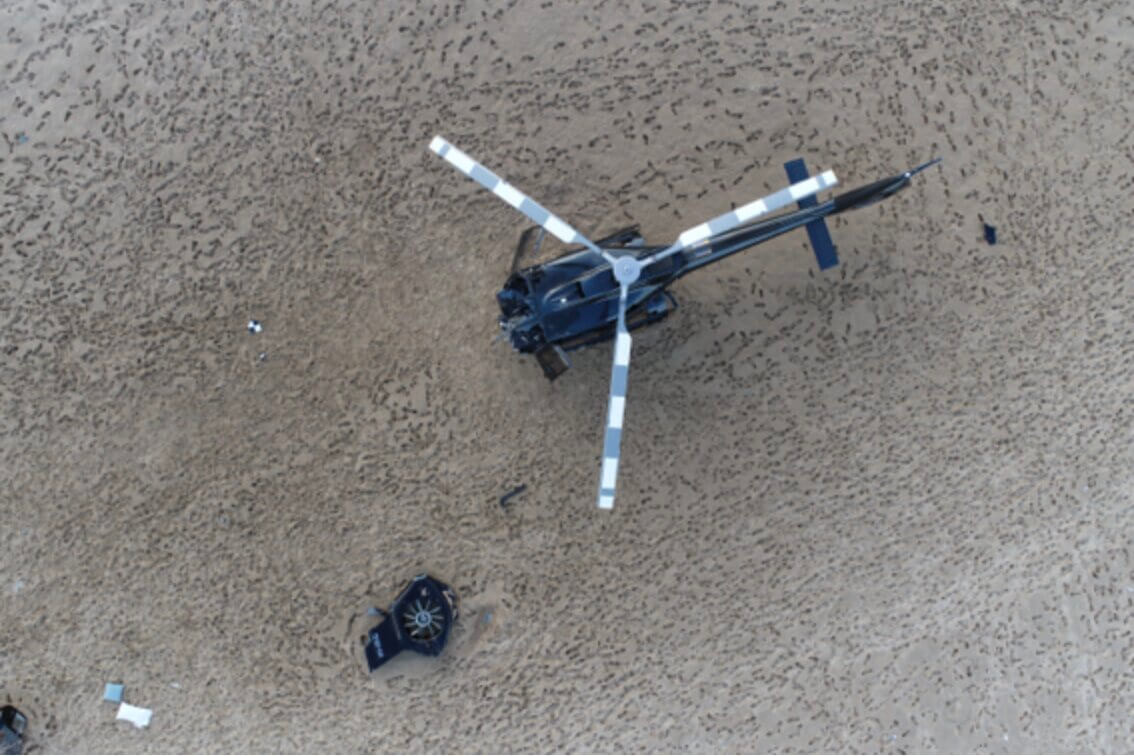The pilot killed in a mid-air collision between two sightseeing helicopters over Australia’s Gold Coast last year had traces of cocaine in his system, the Australian Transport Safety Bureau (ATSB) has revealed in its interim report on the accident.
Four people were killed after the two Sea World Helicopters Airbus EC130 B4s collided on Jan. 2, 2023, just seconds after one of the aircraft had taken off from Sea World on the Gold Coast, Queensland.
A forensic pharmacologist said the levels of cocaine found in chief pilot Ashley Jenkinson’s system indicated he had used the drug up to about four days before the accident, but it was unlikely to have been within 24 hours. Therefore, the ATSB concluded, “it is unlikely there would have been impairment of his psychomotor skills.”
Investigators said they were highlighting the indication of the Jenkinson’s exposure to cocaine as its effects — and post-cocaine exposure — increase risk in aviation. These effects include risk-taking, inattentiveness and poor impulse control, the ATSB said.
“Although it is unlikely the pilot . . . would have had any psychomotor skill impairment on the day of the accident, it is not known whether post-cocaine exposure effects of the drug — which can include fatigue, depression and inattention — had any effect,” the ASTB report states.
In addition to serving as Sea World Helicopters’ chief pilot, Jenkinson, 40, was the company’s head of flight operations, and drug and alcohol management plan (DAMP) supervisor. He had over 6,000 flight hours in single engine helicopters and 200 flight hours in the EC130.
The aircraft had been operating from separate helipads about 720 feet (220 meters) apart on the day of the accident, with one departing on a sightseeing flight (VH-XKQ) as the other was coming into land (VH-XH9).
The ATSB report noted that XH9 had a clear view of the helipads, and its pilot said they saw passengers being loaded into XKQ and the doors of XKQ closing.
“The pilot of XH9 recalled that their assessment at the time was that they would be clear of XKQ and that it would pass behind them,” the ATSB report states. “Therefore, they did not make any further radio calls.”
A passenger who had been on board XKQ said that Jenkinson advised passengers to “talk amongst yourselves” prior to their departure, but did not recall hearing him make any other calls before takeoff.
Twenty four seconds after leaving the helipad, XKQ’s main rotor blades struck the cockpit of XH9, and it lost both its tail and main rotor in the collision. It crashed into a sandbar in the water below, killing Jenkinson and three passengers, and seriously injuring the three other passengers.
The pilot of XH9 performed an emergency landing that accident investigators described as “remarkable” given the severity of the damage it had sustained. In addition to suffering a broken windscreen and frame structures, blade strikes from XKQ had destroyed instruments in XH9 and severed the primary wiring loom in the aircraft’s center console, removing power from its remaining gauges and instrumentation.
The ATSB said examination of both helicopters identified no pre-existing defects.
Its report also highlighted how busy the airspace is generally around Sea World, with 65 aircraft movements below 5,000 feet within five nautical miles of the park’s heliport in the 24 hours before the accident. However, it noted that the airspace was not busy at the time of the accident.
The ATSB said that Sea World Helicopters completed a review of its processes and procedures following the accident, and implemented a variety of changes to reduce the risk of collisions. These include the creation of a “Pad Boss” traffic advisory position, the addition of supplementary air traffic systems to avionics, increased communication protocols for pilots, and enhanced aircraft visibility through high intensity strobe lighting and strobe painting added to main rotor blades.
As the investigation continues, the ATSB said it has begun a safety study to check the visibility of each aircraft from the other’s point of view.
The ATSB’s final report, which will include analysis, findings, and any recommended safety actions, is on track for an anticipated completion in the third quarter of 2024.
“This was a tragic accident, and it is our responsibility to make findings and drive safety actions, which reduce the likelihood of a similar occurrence in the future,” said ATSB chief commissioner Angus Mitchell.





